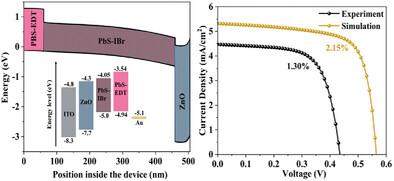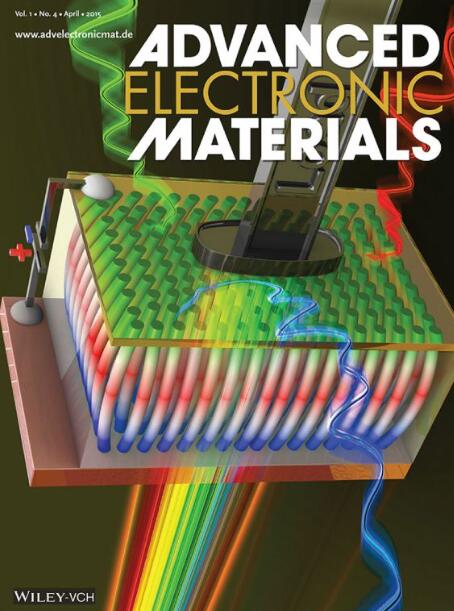High-Efficiency PbS Quantum Dots Infrared Solar Cells via Numerical Simulation and Experimental Optimization
IF 5.3
2区 材料科学
Q2 MATERIALS SCIENCE, MULTIDISCIPLINARY
引用次数: 0
Abstract
Low-bandgap lead sulfide quantum dots (PbS QDs) can efficiently harness the infrared (IR) light in the solar spectrum beyond 1100 nm, showing great application potential in the bottom subcells of tandem solar cells. However, achieving further efficiency improvements in PbS QDs IR solar cells still faces many challenges. In this work, the effects of the absorber layer thickness, the carrier mobility in the absorber layer, the defect density in the absorber layer and at the absorber/electron transfer layer (ETL) interface, and the doping density of the ETL and hole transfer layer (HTL) on the performance of PbS QDs (≈0.95 eV) IR solar cells are systematically investigated through SCAPS-1D simulation. A theoretical efficiency of 16.95% and 2.15% is calculated for PbS QDs IR solar cells under AM 1.5 and 1100 nm-filtered illumination, respectively. Based on the simulation results, the corresponding PbS QDs IR solar cells are fabricated with an efficiency of 11.53% under AM 1.5 illumination, a remarkable 1100 nm-filtered efficiency of 1.30%, and a high external quantum efficiency of 70.50% at 1290 nm. Hence, these findings will accelerate the optimization of the performance of PbS QDs IR solar cells approaching their theoretical efficiency limit.

高效PbS量子点红外太阳能电池的数值模拟与实验优化
低带隙硫化铅量子点(PbS QDs)可以有效地利用太阳光谱中1100 nm以上的红外(IR)光,在串联太阳能电池的底层亚电池中显示出巨大的应用潜力。然而,进一步提高PbS量子点红外太阳能电池的效率仍然面临许多挑战。本文通过SCAPS-1D模拟系统地研究了吸收层厚度、吸收层载流子迁移率、吸收层和吸收层/电子转移层(ETL)界面缺陷密度、ETL和空穴转移层(HTL)掺杂密度对PbS QDs(≈0.95 eV) IR太阳能电池性能的影响。在AM 1.5和1100 nm滤光照射下,PbS量子点红外电池的理论效率分别为16.95%和2.15%。基于仿真结果,制备出相应的PbS量子点红外太阳能电池,在AM 1.5照明下效率为11.53%,在1100 nm处滤光效率为1.30%,在1290 nm处外量子效率为70.50%。因此,这些发现将加速优化PbS量子点红外太阳能电池的性能,接近其理论效率极限。
本文章由计算机程序翻译,如有差异,请以英文原文为准。
求助全文
约1分钟内获得全文
求助全文
来源期刊

Advanced Electronic Materials
NANOSCIENCE & NANOTECHNOLOGYMATERIALS SCIE-MATERIALS SCIENCE, MULTIDISCIPLINARY
CiteScore
11.00
自引率
3.20%
发文量
433
期刊介绍:
Advanced Electronic Materials is an interdisciplinary forum for peer-reviewed, high-quality, high-impact research in the fields of materials science, physics, and engineering of electronic and magnetic materials. It includes research on physics and physical properties of electronic and magnetic materials, spintronics, electronics, device physics and engineering, micro- and nano-electromechanical systems, and organic electronics, in addition to fundamental research.
 求助内容:
求助内容: 应助结果提醒方式:
应助结果提醒方式:


